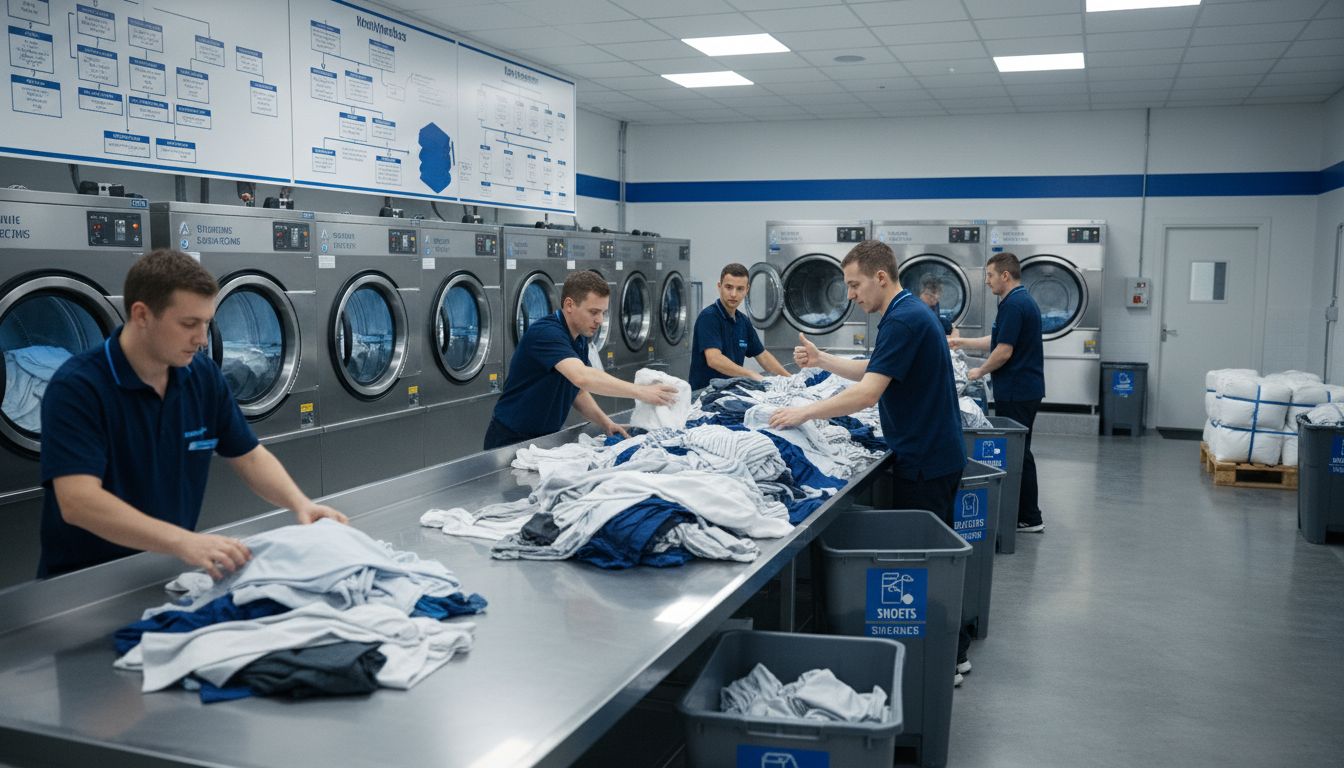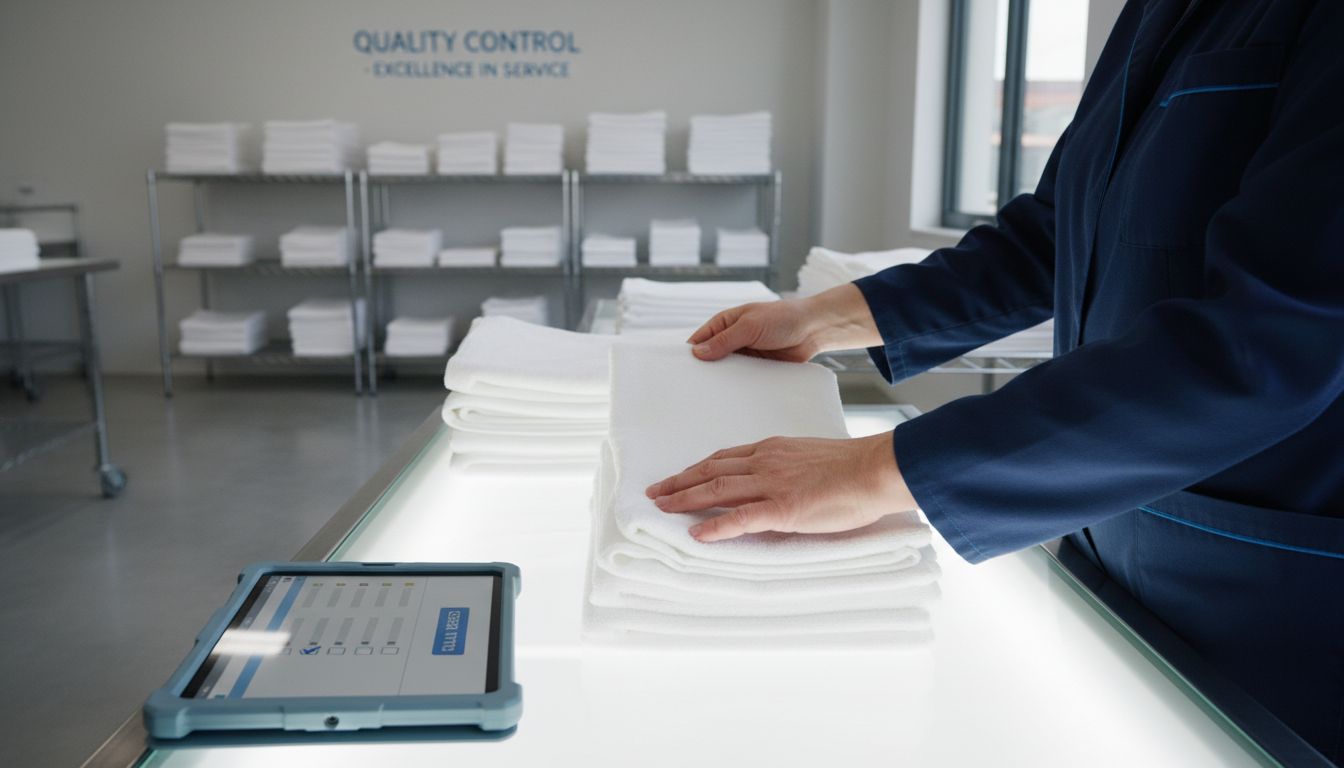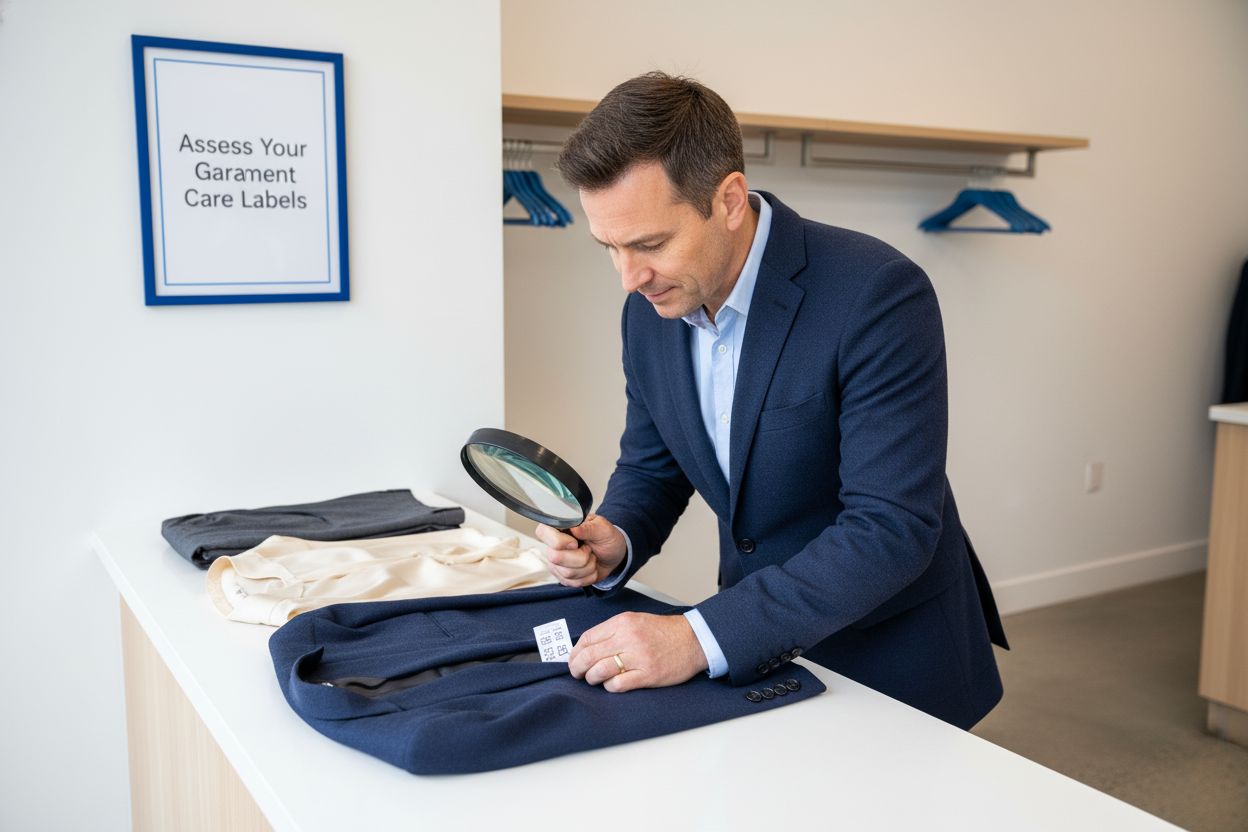Commercial Laundry Best Practices for Superior Results

Managing commercial laundry involves far more than just pressing start on a machine. In busy facilities, a single process improvement can save thousands of gallons of water each year and dramatically reduce operating costs. With regulations tightening and clients expecting spotless results on every order, efficiency and attention to detail matter more than ever. This step-by-step guide reveals practical strategies to streamline your laundry workflow, maximize productivity, and deliver consistently outstanding results.
Quick Summary
| Key Point | Explanation |
|---|---|
| 1. Assess laundry needs carefully | Conduct a thorough analysis of laundry volume, fabric types, and soiling levels to optimize operations and resource use. |
| 2. Choose cleaning methods wisely | Match cleaning products to fabric types and soil conditions, prioritizing both effectiveness and safety for workers. |
| 3. Implement efficient washing techniques | Use high-efficiency machines, optimize load sizes, and maintain equipment for best washing and drying outcomes. |
| 4. Establish strong quality control | Create systematic checks to ensure textiles meet cleanliness and customer satisfaction standards, including unique requirements. |
| 5. Streamline pickup and delivery processes | Develop a well-organized system for pickups and deliveries that enhances customer experience through real-time tracking and communication. |
 |
|
Step 1: Assess Laundry Needs and Sorting Preferences
Successfully managing commercial laundry starts with a strategic assessment of your specific sorting and cleaning requirements. By carefully analyzing your laundry workflow, you can optimize efficiency, reduce resource consumption, and ensure superior cleaning results.
According to the EPA WaterSense at Work guide, conducting a thorough water audit is crucial for identifying potential improvements in your laundry operations. Begin by gathering detailed information about your current laundry volume, fabric types, and soiling levels. Create a comprehensive inventory that includes:
- Total daily or weekly laundry volume
- Types of fabrics processed (uniforms, linens, towels)
- Specific soil levels and stain types
- Current sorting methods
- Existing equipment capacity
The SAHF Laundry Efficiency Study recommends evaluating equipment performance and load sizes to enhance overall operational efficiency. Sort your textiles strategically based on fabric weight, color, and soil intensity. This approach prevents cross contamination and allows for more precise cleaning protocols.
Pro tip: Invest time in training staff about proper sorting techniques. A well-organized sorting system can dramatically improve cleaning outcomes and extend the lifespan of your textiles.
Once you have completed your initial assessment, you will be prepared to design a targeted laundry workflow that maximizes cleaning effectiveness while minimizing resource waste.
Step 2: Select Appropriate Cleaning Methods and Products
Selecting the right cleaning methods and products is fundamental to achieving superior laundry results while maintaining safety and efficiency. Your goal is to match specific cleaning solutions to different fabric types and soil conditions, ensuring optimal cleaning performance.
According to the American Cleaning Institute, innovative research is expanding our understanding of detergent performance at lower temperatures. This means you can now choose cleaning products that are both energy efficient and highly effective. When selecting cleaning methods, consider these critical factors:
- Fabric composition and delicacy
- Type and intensity of soil or staining
- Water temperature requirements
- Potential environmental and health impacts
- Specific industry or regulatory compliance needs
The CDC’s NIOSH publication emphasizes the importance of selecting cleaning chemicals that minimize worker exposure to hazardous substances. This means going beyond cleaning effectiveness to prioritize safety. You will want to carefully evaluate product labels, safety data sheets, and recommended application methods for each specific cleaning solution.
Pro Tip: Always perform a small test on a discrete area before applying any new cleaning method to ensure compatibility and prevent potential fabric damage.
Through thoughtful product selection and method application, you can achieve thorough cleaning results while protecting both your textiles and your team’s health. These strategic choices set the foundation for a robust and reliable commercial laundry workflow.
Step 3: Implement Efficient Washing and Drying Techniques
Efficient washing and drying techniques are critical for optimizing your commercial laundry operations, reducing resource consumption, and achieving consistently superior cleaning results. Your approach should balance performance with sustainability, ensuring maximum effectiveness while minimizing environmental impact.
According to the EPA WaterSense at Work guide, implementing best management practices is essential for reducing water and energy consumption. Focus on these key strategies:
- Invest in high efficiency washing machines
- Optimize load sizes to maximize machine capacity
- Use appropriate water temperatures for different fabric types
- Select wash cycles that match specific soil levels
- Regularly maintain and calibrate laundry equipment
The SAHF Laundry Efficiency Study reinforces the importance of operational optimization, highlighting how strategic equipment selection and usage can lead to substantial savings. When loading machines, distribute textiles evenly and avoid overloading, which can compromise cleaning quality and increase wear on fabrics.
Pro Tip: Track your machine performance and energy consumption monthly to identify opportunities for continuous improvement.
By implementing these efficient washing and drying techniques, you will create a more sustainable and cost effective laundry workflow that delivers consistently excellent results. Your next step involves carefully monitoring and fine tuning your processes to maintain peak performance.
Step 4: Apply Quality Control Checks and Special Requests
Quality control is the cornerstone of exceptional commercial laundry services, ensuring every textile meets the highest standards of cleanliness, appearance, and customer satisfaction. Your goal is to develop a systematic approach that consistently validates the quality of processed items and accommodates individual customer preferences.
According to the Textile Rental Services Association, maintaining hygienically clean textiles requires rigorous quality control protocols. Implement a comprehensive inspection process that includes:
- Visual examination for stains or imperfections
- Texture and softness assessment
- Color consistency verification
- Checking for proper sizing and shape retention
- Ensuring complete removal of odors and contaminants
The Business Grants article emphasizes the critical role of special request management in building customer trust. Develop a standardized system for capturing and fulfilling unique customer requirements such as specific folding techniques, fragrance preferences, or fabric treatment needs.
Pro Tip: Create a detailed customer preference profile for repeat clients to streamline future service and demonstrate your commitment to personalized care.
By meticulously applying quality control checks and proactively managing special requests, you transform routine laundry service into an exceptional customer experience. Your attention to detail will set you apart in a competitive marketplace.

Step 5: Organize Pickup, Delivery, and Order Completion
Streamlining your pickup, delivery, and order completion process is crucial for creating a seamless customer experience that builds trust and loyalty. Your objective is to develop a systematic approach that ensures efficient service from the moment a customer requests laundry services to the final delivery of cleaned items.
According to M Collection, integrating smart technologies can dramatically enhance operational efficiency. Implement a comprehensive workflow that includes:
- Real-time order tracking capabilities
- Precise scheduling for pickups and deliveries
- Digital communication channels for customer updates
- Automated status alerts
- Flexible time window options for customer convenience
Create a standardized process that covers every stage of the service. Begin with clear communication protocols that confirm pickup times, provide estimated completion dates, and offer transparent tracking mechanisms. Develop a digital platform that allows customers to schedule services, monitor progress, and receive instant notifications about their orders.
Pro Tip: Design your pickup and delivery system to offer maximum flexibility while maintaining predictable turnaround times.
By meticulously organizing your pickup, delivery, and order completion workflow, you transform a routine service into a customer-centric experience that sets your commercial laundry operation apart from competitors. Your commitment to seamless logistics will become a significant competitive advantage.
Elevate Your Commercial Laundry Experience with Trusted Local Expertise
Managing commercial laundry involves tackling challenges like sorting complexity, maintaining fabric integrity, and ensuring consistent quality control. This article highlights the importance of well-planned workflows, safe and effective cleaning methods, and streamlined pickup and delivery. If you are aiming to reduce resource waste, protect your textiles, and meet customer-specific preferences with confidence, you deserve a partner who understands these exact needs.
At Columbia Pike Laundry, we specialize in delivering superior commercial laundry results through hands-on expertise and advanced technology. Our in-house processing means tight quality control, while our flexible options like fragrance-free detergents and special folding instructions ensure your unique requirements are honored. Discover how our Commercial Solutions | Laundry Tips can support efficient operations and unbeatable fabric care. Ready to simplify your laundry workflow and enjoy reliable turnaround times? Visit us at Columbia Pike Laundry to schedule pickup or drop-off and join customers who experience true Laundry Relief | Laundry Tips every day.
Frequently Asked Questions
What initial steps should I take to assess my commercial laundry needs?
To assess your commercial laundry needs, start by gathering data on your current laundry volume, fabric types, and soil levels. Create an inventory that includes total daily or weekly laundry volume, specific soil types, and current sorting methods to optimize your workflow.
How can I select the best cleaning products for different fabrics in my laundry operation?
To select the best cleaning products, consider the fabric composition and the type of soil or staining involved. Match cleaning solutions to the specific requirements of each fabric type and always check for safety data sheets to ensure worker safety during the cleaning process.
What efficient washing and drying techniques should I implement in my commercial laundry?
Implement high-efficiency washing machines and optimize load sizes to maximize capacity while ensuring proper distribution. Regularly maintain equipment and use appropriate water temperatures for different fabrics to enhance efficiency and minimize water usage.
How do I establish effective quality control checks in my laundry services?
Establish a quality control process by creating a comprehensive inspection protocol that includes visual examinations, texture assessments, and color consistency checks. Ensure thorough review against customer specifications to maintain high service standards and customer satisfaction.
What steps can I take to streamline my pickup and delivery process?
Streamline your pickup and delivery process by implementing precise scheduling and real-time order tracking capabilities. Create clear communication protocols for confirming times and developing a system for automated status alerts to keep customers informed about their orders.
Recommended
Popular Blog Articles

Meet the Author
Daniel Logan didn’t start CPL because he loved laundry. He started it because his family was drowning in time debt, and laundry was one of the biggest weights.
Mornings were chaos with two kids under 5. Evenings felt like catch-up. And weekends? Gone to sorting socks and folding piles.
He knew his story wasn’t unique. So he built a business that gave families like his just a little bit of breathing room one load at a time.
With no laundry experience but deep tech skills, Daniel rolled up his sleeves, doing every job himself while building systems that turned it into a modern laundry service that saves customers time, simplifies their lives, and delivers reliability they can count on.
That’s where CPL began. Not from a playbook, but from pain. From one dad trying to buy back time: for himself, and for every household like his.





